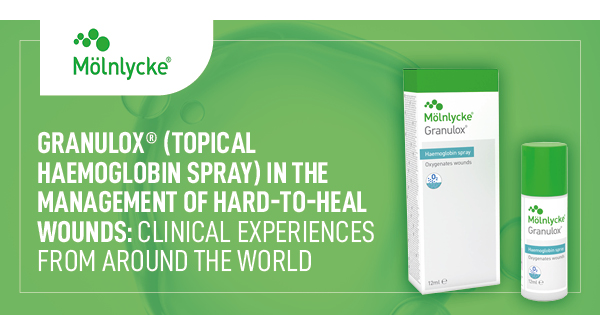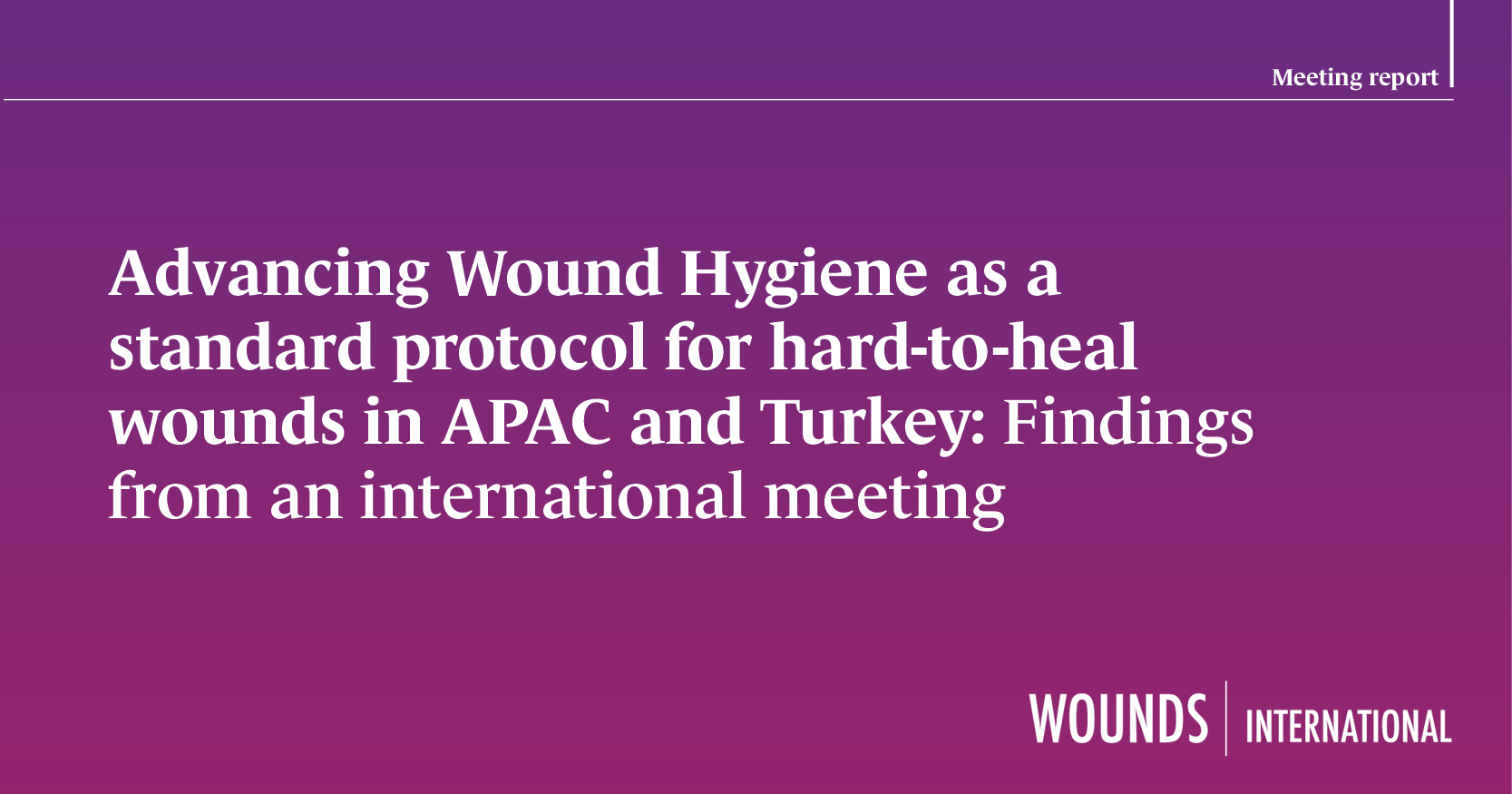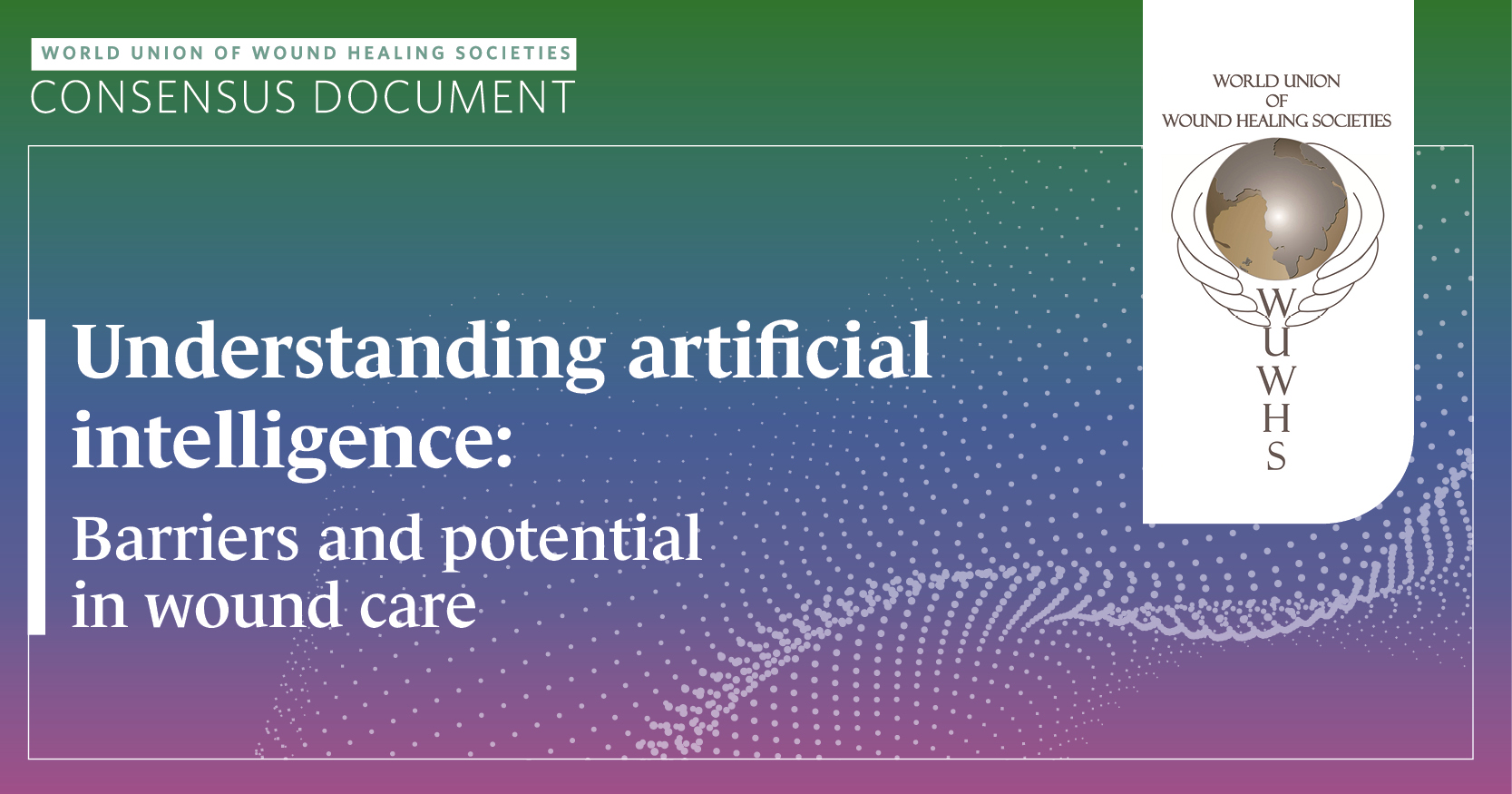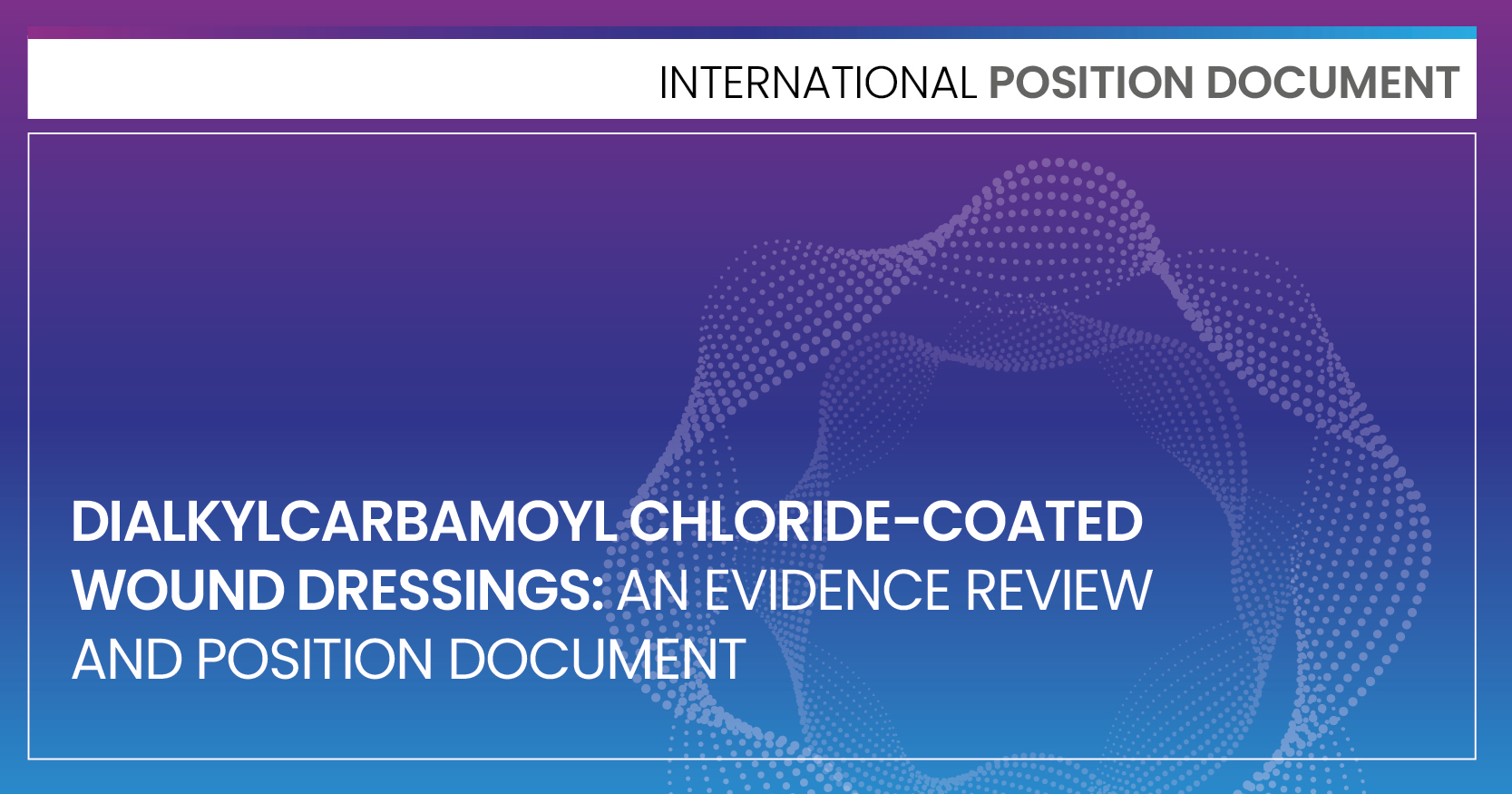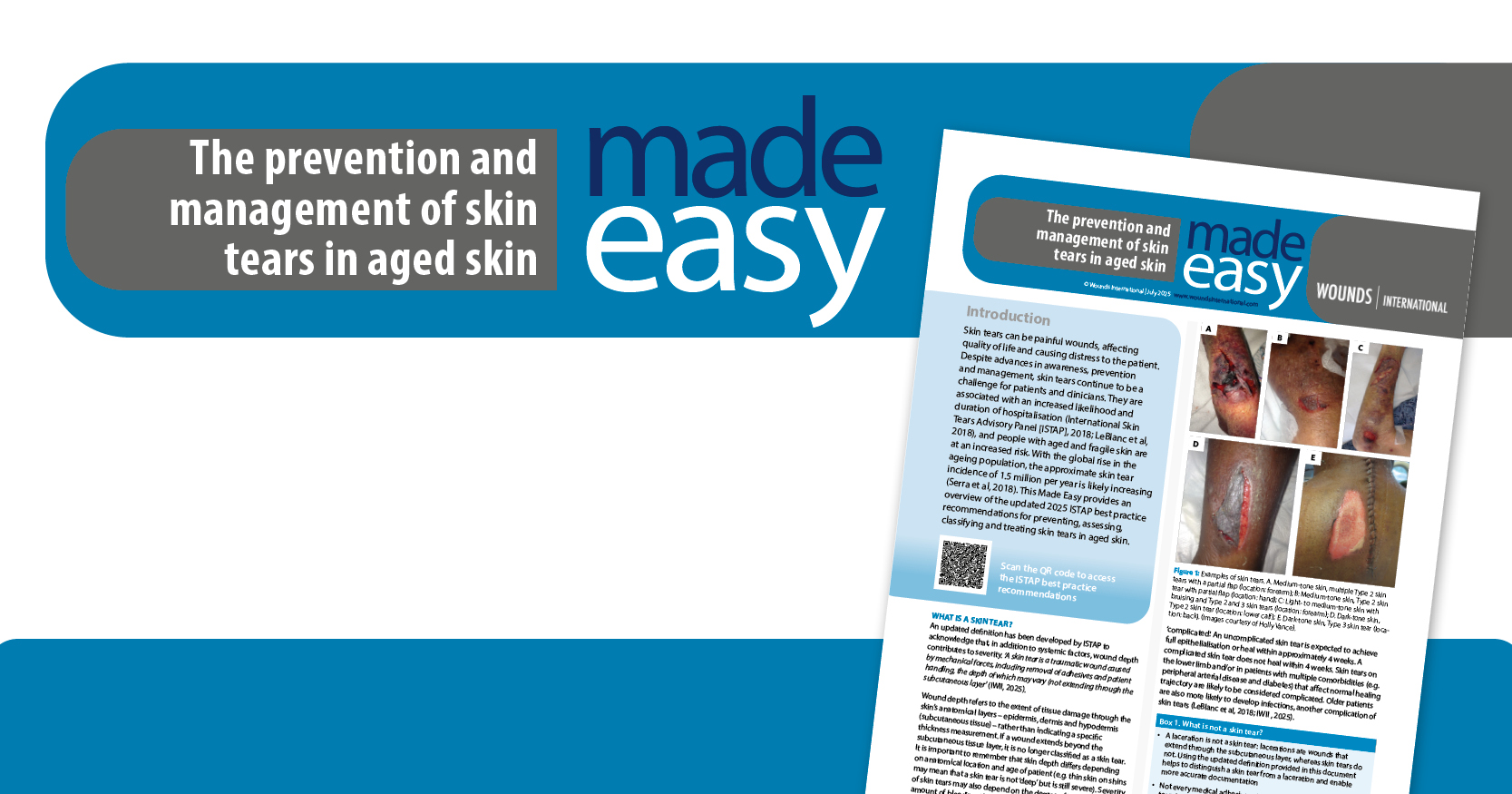Role of oxygen in wound healing
The body’s first defence against microorganisms and trauma is the skin. When the skin is damaged, its natural protective barrier function is impeded. The tightly regulated biological process of wound healing is critical to the restoration of the skin’s barrier function (Han and Ceilley et al, 2017; Singh et al, 2017). While most wounds typically heal within days or weeks, others (often referred to as ‘chronic’ or ‘hard-to-heal’) can persist for months and even years (Frykberg and Banks, 2015). These hard-to-heal wounds become ‘stalled’, most commonly in the inflammatory phase of the healing process, and generally require clinical intervention to achieve healing (Hampton, 2015). The risk of wound chronicity is associated with underlying pathologies and comorbidities (e.g. diabetes mellitus, venous insufficiency, immobility, immune suppression, increasing age, malnutrition) and some clinical interventions (e.g. steroid therapy; Dermidova-Rice et al, 2012).
Oxygen is a vital requirement for almost every step in the wound healing process, including angiogenesis, re-vascularisation, synthesis of connective tissue and resistance to infection (Figure 1; Chadwick et al, 2019).
Effect of hypoxia on wound healing
When injury occurs, a wound quickly becomes hypoxic, typically with an increasing oxygen gradient towards the intact tissue (Bishop, 2008). Hypoxia may be due to an increased oxygen demand because of the high metabolic activity of a healing wound, but may also be affected by the partial oxygen pressure of the surrounding tissue and suboptimal circulating blood supply, e.g. injured microcirculation, diffusive constraints due to oedema, poor blood circulation (peripheral arterial disease (PAD)), or oxygen consumption by bacterial biofilm. Initially, acute hypoxia acts as a signal to promote the healing process (Rutherford et al, 2014; Strowitzki et al, 2019) but prolonged hypoxia [Figure 2] is detrimental to healing progression (Gottrup et al, 2017; Chadwick et al, 2019; Younis, 2020). In chronic wounds sustained oxygen deficit at the wound bed has been shown, with an associated detrimental effect on wound healing (Dissemond et al, 2015).
Delivering additional oxygen to the hypoxic wound
The availability of oxygen is a strong predictor for wound healing outcome; just 3% of wounds with an extremely low oxygen concentration heal, compared to 95% of wounds with a normal oxygen concentration (Hauser, 1987). Therefore, supplying additional oxygen directly to the wound bed, an intervention that has been used in wound care for many years, may help promote healing. The goal of appropriate oxygen therapy is to transfer sufficient oxygen to interstitial tissues to maintain wound repair processes throughout the healing trajectory (Kruger et al, 2020). However, the mechanism by which oxygen is delivered to the wound is a critical factor in achieving successful outcomes.
The first type of oxygen therapy to be used in the field of wound care was hyperbaric oxygen therapy (HBOT) back in the 1960s (Gottrup et al, 2017), but this systemic intervention requires substantial dedicated infrastructure and is not widely available. Nowadays, a variety of portable products are available to deliver topical oxygen therapy (TOT) to wounds (Dissemond et al, 2015; Gottrup et al, 2017; Chadwick et al, 2019).
TOT aims to increase oxygen levels at the wound site, thus facilitating the reversal of localised hypoxia, particularly for wounds that have failed to respond to standard care. Unlike systemic oxygen therapy
(i.e. HBOT), TOT does not rely on the vascular system to deliver oxygen to the wound. Several randomised controlled trials and systematic reviews with meta-analyses have validated many aspects of TOT, leading the American Diabetes Association (ADA) to give TOT the highest level evidence rating in its ‘Standards of Care’ guideline (ADA, 2023).
Furthermore, in its updated guidelines, the International Working Group on the Diabetic Foot (IWGDF) points out that “the evidence on topical oxygen has substantially expanded in the last four years”, leading to the recommendation “Consider the use of topical oxygen as an adjunct therapy to standard of care for wound healing in people with diabetes-related foot ulcers where standard of care alone has failed and resources exist to support this intervention” (IWGDF, 2023).
Granulox® (topical haemoglobin spray)
Granulox® is a topical haemoglobin spray that is designed to improve the oxygen supply to chronic wounds through simplified diffusion, thereby promoting wound healing. When Granulox® is applied to the wound bed, the haemoglobin binds oxygen from the surrounding air and transports it to the wound bed where it diffuses into the cells (Dissemond et al, 2015) [Figure 4]. Granulox® is indicated for the treatment of chronic diabetes-related foot ulcers, venous, arterial and mixed leg ulcers, pressure ulcers and post-surgical wounds. It can also be used to help facilitate the healing of sloughy and infected wounds.
he following sub-sections summarise the findings of the key clinical studies that have been undertaken to evaluate the efficacy of Granulox® with regard to wound healing, pain reduction and sloughy tissue presence.
Wound healing
A randomised controlled trial undertaken in the Czech Republic assessed the impact of introducing Granulox® into the standard care regime (nanofibre dressing, gauze fixation and short-stretch compression bandaging), as compared to standard care alone, in the treatment of chronic venous leg ulcers. After 13 weeks of treatment, those ulcers treated with Granulox® demonstrated an average 53% reduction in size, as compared to a 21% increase in size in those ulcers treated with just standard care (i.e. no Granulox®) (Arenbergerova et al, 2013).
In other clinical studies undertaken in the UK, a regime involving the addition of Granulox® to standard care was associated with better wound healing rates, compared to standard care alone (Table 1; Hunt and Elg, 2016; Hunt and Elg, 2017; Hunt et al, 2018).
Wound pain
Among other burdensome complications, patients with hard-to-heal wounds may experience pain, which can negatively impact on their quality of life. Hypoxic signalling induced by reduced vascularity can result in increased hypersensitivity and pain (Da Vitoria Lobo et al, 2022), hence interventions that are aimed at addressing hypoxia can be expected to reduce pain. In the clinical studies outlined in Table 1, reductions in pain were observed when Granulox® was used as an adjunct to standard wound care. For example, one study observed a 40% mean reduction in pain scores in patients receiving Granulox® plus standard of care compared to 13% in those receiving standard care alone after one week of treatment. By week four, this difference increased with an 86% mean reduction in pain scores in the Granulox® plus standard of care group compared with 16% in the standard care group (Hunt and Elg, 2017).
Sloughy tissue
In addition to observations of pain reduction in patients receiving treatment with Granulox®, the clinical studies outlined in Table 1 also demonstrated the topical haemoglobin spray to have an effect on sloughy tissue. For example, in the most recently undertaken study, 99% less slough was observed after four weeks of treatment with Granulox® in conjunction with standard care, compared to 33% less with standard care alone (Hunt et al, 2018).
Cost-effectiveness
Wound duration (time to healing), frequency of dressing changes and occurrence of complications are fundamental to determining the value of interventions in wound care. A health economic study in the UK used real-life data from an interventional clinical study within a community setting (Hunt and Elg, 2017) to provide clarity on the impact of dressing costs and to demonstrate the cost-effectiveness of including Granulox® in the standard care treatment regimen for hard-to-heal wounds (pressure ulcers, leg ulcers, diabetes-related foot ulcers, burns, surgical and traumatic wounds), as compared to standard care alone. A de novo cost-effectiveness and break-even analysis were performed based on the study data, considering only wound care dressing costs and the total number of weeks the wounds were healed (i.e. no dressings applied) in each group. Dressing costs for the Granulox® plus standard care group were £6,953, compared to £9,547 for the standard care only group (Elg and Bothma, 2019).
The results of the clinical studies described above demonstrate that the addition of Granulox® to standard wound care can decrease time to healing and, thereby, reduce the frequency of dressing changes and the incidence of complications compared to a wound care regime that does not include the topical haemoglobin spray. Collectively, the clinical and health economic evidence suggests that Granulox® (as an adjunct to standard care) supports the achievement of better clinical outcomes at a reduced cost, thereby providing a dominant treatment option when compared to standard care alone.
Download the full document below to see the case studies

